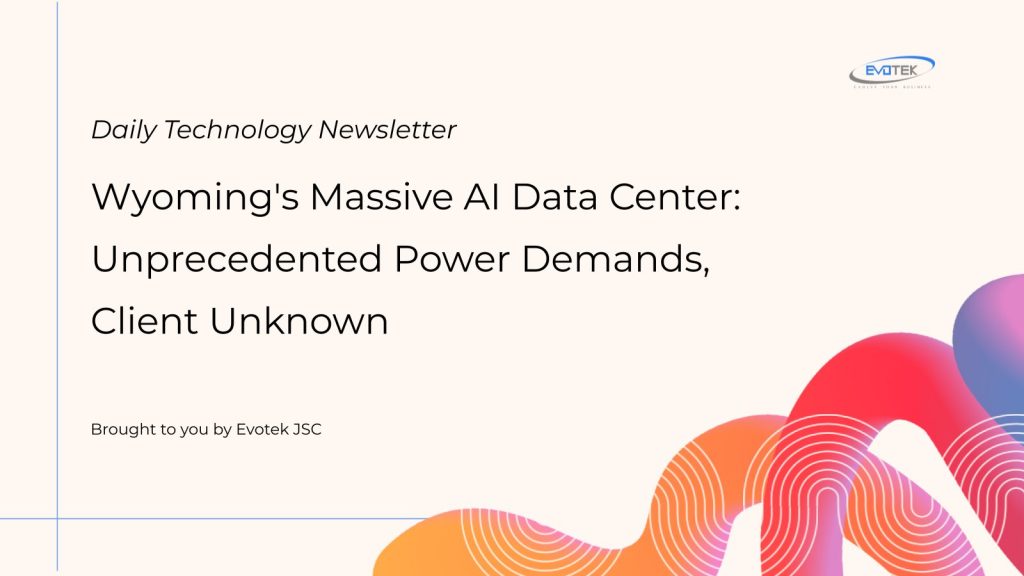A new artificial intelligence data center planned for Cheyenne, Wyoming, is generating significant buzz and raising critical questions about future energy consumption. This ambitious project, a collaboration between energy firm Tallgrass and data center developer Crusoe, is set to begin operations at 1.8 gigawatts and has the potential to expand to a staggering 10 gigawatts.
To put this into perspective, the facility’s initial power requirement alone will exceed five times the electricity currently used by all households across Wyoming. Its ultimate capacity could consume twice as much electricity as the entire state presently produces annually, marking an unprecedented energy leap for the region.
Dedicated Power Supply for a Silent Tenant
Given the immense energy demands, drawing power from the existing public grid is not a viable option. Instead, the developers plan to construct a dedicated power infrastructure, combining natural gas and renewable energy plants specifically to supply the data center. This approach aims to ensure a stable and independent power source for the facility.
Despite the grand scale of the project, a notable mystery persists: the identity of the future occupant of this colossal AI data center remains undisclosed. This secrecy has fueled widespread speculation, with many industry observers pointing towards OpenAI.
The OpenAI Speculation and “Project Stargate”
The speculation around OpenAI stems from its recent partnership with Crusoe on a separate, even larger facility in Texas. That site, described as the “largest data center” globally, reportedly consumes approximately one gigawatt of energy and is believed to be part of OpenAI’s ambitious “Stargate” initiative, aimed at building significant data center capacity.
While OpenAI has publicly committed to developing several gigawatts of data center infrastructure, the company has not confirmed any involvement in the Wyoming project. When questioned, Crusoe notably declined to comment on whether the new Cheyenne site is linked to the “Stargate” initiative, deepening the shroud of uncertainty.
The Heart of AI: High-Performance Hardware
At the core of such large-scale AI-focused data centers lies the necessity for extremely high-performance computing hardware. Industry experts anticipate that the Wyoming facility will house the most powerful CPUs and GPUs available, likely configured in dense, rack-mounted workstations optimized for intensive deep learning and model training tasks. These systems are inherently power-hungry, with each server node requiring substantial power for processing and continuous cooling to maintain operational efficiency.
Regional Impact and Future Implications
Wyoming state officials have largely welcomed the project, viewing it as a significant boost to local industries, particularly the natural gas sector. However, some experts express concerns about the broader implications.
Even with a self-sufficient power model, a data center of this magnitude could reshape regional power dynamics. There are warnings that residents of Wyoming and its surrounding areas might face higher utility costs, especially if local supply chains or energy pricing models are indirectly affected. Furthermore, Wyoming’s established identity as a major energy exporter could be tested if more such AI infrastructure projects emerge within its borders.

 日本語
日本語 한국어
한국어 Tiếng Việt
Tiếng Việt 简体中文
简体中文